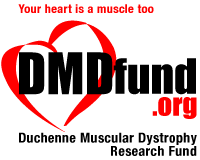
- Corticosteroids:
- Prednisone: Approved for DMD since 2004
- Deflazacort (Emflaza): Approved in 2017, specifically for DMD
- First steroid specifically indicated for DMD
- Shown to have potentially fewer weight gain side effects compared to prednisone
- Exon-Skipping Therapies:
- Eteplirsen (Exondys 51): Approved in 2016
- First FDA-approved targeted therapy for DMD
- For patients with mutations amenable to exon 51 skipping (approximately 13% of DMD population)
- Golodirsen (Vyondys 53): Approved in 2019
- For patients with mutations amenable to exon 53 skipping (approximately 8% of DMD population)
- Casimersen (Amondys 45): Approved in 2021
- For patients with mutations amenable to exon 45 skipping (approximately 8% of DMD population)
- Viltolarsen (Viltepso): Approved in 2020
- Alternative exon 53 skipping therapy
- Demonstrated higher dystrophin production than golodirsen in clinical trials
- Eteplirsen (Exondys 51): Approved in 2016
- Gene Therapy:
- Delandistrogene moxeparvovec (Elevidys): Conditionally approved in 2023
- First gene therapy approved for DMD
- For patients aged 4-5 years old (initial approval)
- Delivers a shortened form of dystrophin gene (micro-dystrophin)
- Approval expanded in 2024 to include patients up to age 8
- Delandistrogene moxeparvovec (Elevidys): Conditionally approved in 2023
Current FDA-Approved Therapies
Between the molecular frontier and the measured pace of regulation stretches a landscape both intimate and vast—the realm of Duchenne Muscular Dystrophy drug development. Here, time behaves differently than in our everyday lives: for scientists, progress unfolds in gradual revelations measured in published papers and incremental findings; for families watching their children’s strength ebb, each day without treatment is an eternity; for regulators, decisions must balance the urgent present against unknown futures. Like particles existing in multiple states until observed, these therapies inhabit a curious limbo—simultaneously full of promise and uncertainty until the moment of approval crystallizes their fate. The story of DMD treatments is written in the weathered lines of lab notebooks and the anxious expressions at FDA hearings, each drug carrying within it countless parallel possibilities—worlds where children might walk longer, breathe easier, or reach adulthood. In this borderland between hope and evidence, we find ourselves contemplating what it means to know something works, and what risks we’re willing to accept when the alternative is the certainty of decline.
What treatments are currently FDA-approved specifically for DMD?
Regulatory Pathways and Controversies
How were these therapies approved and what controversies surrounded their approval?
- Accelerated Approval Pathway:
- Most DMD therapies have been approved through the FDA’s accelerated approval pathway
- Based on surrogate endpoints (typically dystrophin production) rather than clinical benefit
- Requires post-approval studies to confirm clinical benefit
- Allows earlier access to promising therapies for serious conditions with unmet needs
- Eteplirsen Approval Controversy:
- FDA’s own advisory committee voted 7-3 against approval
- FDA scientific reviewers recommended against approval
- Then-FDA Commissioner Dr. Janet Woodcock overruled internal recommendations
- Approved based on minimal dystrophin production (0.3% of normal)
- Set precedent for subsequent approvals with limited data
- Evidence Limitations:
- Small clinical trial sizes (often under 100 patients)
- Challenges in establishing appropriate control groups
- Reliance on historical controls and natural history data
- Variability in disease progression complicating outcomes assessment
- Debate over meaningful dystrophin threshold (how much is enough?)
- Cost and Access Issues:
- Pricing of approved therapies (often $300,000-$1,000,000+ annually)
- Insurance coverage challenges and appeals processes
- Geographic disparities in access to specialized treatment centers
- Global access limitations outside high-income countries
- Post-Approval Requirements:
- Ongoing post-approval studies for all accelerated approvals
- Withdrawal potential if clinical benefit not confirmed
- Timeline extensions for confirmatory trials
- Challenges in recruitment for placebo-controlled studies after approval
Current Research Pipeline
What promising therapies are in the clinical development pipeline?
- Additional Exon-Skipping Compounds:
- SRP-5051: Next-generation exon 51 skipping therapy using peptide-conjugated technology for enhanced delivery
- WVE-N531: Exon 53 skipping therapy using novel stereopure oligonucleotide chemistry
- Additional compounds targeting exons 44, 52, 55, extending coverage to more patients
- Gene Therapy Approaches:
- SGT-001: AAV-delivered micro-dystrophin (Phase 3)
- PF-06939926/fordadistrogene movaparvovec: Pfizer’s AAV-delivered micro-dystrophin (Phase 3)
- IGNITE DMD: AAV-delivered micro-dystrophin with alternative design (Phase 1/2)
- Gene Editing Approaches:
- CRISPR/Cas9 for Exon Skipping: Direct editing of the dystrophin gene (preclinical/early clinical)
- CRISPR/Cas9 for Exon Reframing: Correcting reading frame disruptions (preclinical)
- Prime Editing: More precise editing with potentially fewer off-target effects (preclinical)
- Utrophin Upregulation:
- Ezutromid: Small molecule utrophin modulator (development discontinued after Phase 2)
- SMT C1100: Alternative utrophin modulator (early clinical)
- Utrophin gene therapy: Direct delivery of utrophin gene (preclinical)
- Anti-Inflammatory and Anti-Fibrotic Approaches:
- Vamorolone: Selective glucocorticoid receptor modulator with steroid-like efficacy but reduced side effects (FDA approval pending)
- Idebenone: Antioxidant targeting mitochondrial dysfunction (Phase 3)
- Givinostat: Histone deacetylase inhibitor targeting fibrosis (Phase 3)
- CAP-1002: Cardiosphere-derived cells with anti-inflammatory properties (Phase 2)
- Muscle Growth Promoters:
- Talditercept alfa: Anti-myostatin approach using ActRIIB decoy receptor (Phase 2/3)
- SRK-015/apitegromab: Selective myostatin inhibitor (Phase 2/3)
- ACE-031: Activin receptor inhibitor (development discontinued after early trials)
Clinical Trial Design Challenges
What unique challenges affect clinical trials in DMD?
- Patient Population Constraints:
- Rare disease with limited eligible participants
- Genetic heterogeneity requiring mutation-specific targeting
- Competitive recruitment between multiple simultaneous trials
- Geographic distribution of patients relative to trial sites
- Age-related inclusion criteria limiting eligibility
- Outcome Measure Complexity:
- Natural variability in disease progression
- “Plateau phase” complicating detection of treatment effects
- Sensitivity of functional measures over short trial durations
- Age-dependency of standard functional assessments
- Challenges capturing upper body and respiratory function
- Control Group Considerations:
- Ethical concerns about placebo use in progressive disorders
- Patient/family reluctance to risk placebo assignment
- Use of natural history controls with methodological limitations
- External control matching challenges
- Potential treatment effect confounding from standard care
- Biomarker Validation:
- Correlation between dystrophin levels and clinical benefit
- Variability in dystrophin quantification methods
- Development of non-invasive biomarkers
- Qualification of digital and wearable measurement tools
- Regulatory acceptance of novel biomarkers
- Long-term Effects Assessment:
- Trial duration versus progressive nature of the disease
- Loss to follow-up over extended periods
- Evolving standard of care affecting comparisons
- Ethical challenges in maintaining randomization long-term
- Crossover designs and their analytical challenges
FDA Review Process Specifics
How does the FDA review process work for DMD therapies?
- Pre-Submission Engagement:
- Early engagement through INTERACT meetings (Initial Targeted Engagement for Regulatory Advice on CBER/CDER products)
- Pre-IND (Investigational New Drug) meetings
- Rare Pediatric Disease Designation applications
- Orphan Drug Designation applications
- Fast Track and Breakthrough Therapy requests
- Review Pathways Relevant to DMD:
- Accelerated Approval: Based on surrogate endpoint (e.g., dystrophin production)
- Priority Review: Shortened review timeline (6 vs 10 months)
- Fast Track: Designed to expedite development and review
- Breakthrough Therapy: For therapies with preliminary evidence of substantial improvement
- Rare Pediatric Disease Priority Review Voucher: Incentive for development
- Advisory Committee Involvement:
- Peripheral and Central Nervous System Drugs Advisory Committee
- Cellular, Tissue, and Gene Therapies Advisory Committee (for gene therapies)
- Public hearings including patient/family testimony
- Expert assessment of benefit-risk balance
- Non-binding recommendations to FDA
- Post-Approval Requirements:
- Confirmatory trials to verify clinical benefit
- Risk Evaluation and Mitigation Strategies (REMS) if required
- Post-marketing surveillance requirements
- Pediatric study requirements under PREA (Pediatric Research Equity Act)
- Label updates based on emerging data
- Patient-Focused Drug Development:
- Integration of patient experience data
- Patient-reported outcome measure development
- Patient preference studies
- Benefit-risk assessments incorporating patient perspectives
- Patient listening sessions and public workshops
International Regulatory Considerations
How do approvals differ internationally for DMD therapies?
- European Medicines Agency (EMA):
- More conservative approach than FDA for DMD therapies
- Rejected eteplirsen and golodirsen based on insufficient evidence
- Approved Translarna (ataluren) for nonsense mutations (not FDA-approved)
- Conditional approval pathway similar to FDA accelerated approval
- PRIME (PRIority MEdicines) scheme for expedited development
- Japan’s PMDA (Pharmaceuticals and Medical Devices Agency):
- Approved viltolarsen before FDA through sakigake designation
- Conditional early approval system for regenerative medicines
- Often requires smaller trials with Japanese participants
- Post-marketing surveillance requirements emphasized
- Health Canada:
- Notice of Compliance with Conditions (NOC/c) similar to accelerated approval
- Approved deflazacort before FDA
- Priority Review pathway for serious conditions
- Special Access Programme for unapproved medications
- Global Harmonization Efforts:
- International Council for Harmonisation (ICH) guidelines
- Project Orbis for coordinated submissions across multiple countries
- Collaborative assessment approaches between agencies
- Acceptance of foreign clinical data with appropriate bridging
- Parallel scientific advice meetings with multiple regulatory bodies
- Approval Timeline Disparities:
- Therapy availability varying by 1-5+ years between countries
- Coverage and reimbursement decisions further delaying actual access
- Impact of different health technology assessment approaches
- Compassionate use/expanded access variations internationally
Payment and Access Challenges
How do insurance coverage and payment systems affect access to approved DMD therapies?
- U.S. Coverage Landscape:
- Private insurance coverage varies by plan design
- Prior authorization requirements and specific coverage criteria
- Multiple levels of appeals process for denials
- Medicaid coverage varying by state with different utilization management
- Medicare coverage for dual-eligible beneficiaries or those qualifying through SSDI
- Reimbursement Challenges:
- “Medical benefit” versus “pharmacy benefit” coverage differences
- Site-of-care restrictions limiting administration settings
- Step therapy requirements (trying less expensive options first)
- Annual or lifetime caps in some insurance plans
- Coverage gaps during insurance transitions
- Manufacturer Support Programs:
- Patient assistance programs for uninsured/underinsured
- Co-pay assistance programs for commercially insured
- Bridge programs during coverage determinations
- Free drug programs for eligible patients
- Reimbursement support services and appeals assistance
- Value Assessment Frameworks:
- ICER (Institute for Clinical and Economic Review) evaluations
- QALY (Quality-Adjusted Life Year) limitations for rare diseases
- Alternative value frameworks for rare pediatric conditions
- Outcomes-based agreements and risk-sharing models
- Budget impact considerations for health systems
- Global Access Variations:
- National health technology assessments driving coverage decisions
- Reference pricing systems affecting global pricing strategy
- Managed entry agreements in various markets
- Patient advocacy influence on reimbursement decisions
- Tiered global pricing strategies
Future of DMD Drug Development
What trends are shaping the future of drug development for DMD?
- Combination Therapy Approaches:
- Targeting multiple disease pathways simultaneously
- Exon skipping plus anti-inflammatory agents
- Gene therapy plus muscle growth enhancement
- Potential synergistic effects between complementary mechanisms
- Regulatory and reimbursement challenges for combination approaches
- Biomarker Development:
- Serum and urine biomarkers for disease progression
- Imaging biomarkers (MRI, ultrasound) for muscle quality
- Digital biomarkers from wearable devices
- Predictive biomarkers for therapy response
- Pharmacodynamic markers for dose optimization
- Innovative Trial Designs:
- Platform trials testing multiple therapies simultaneously
- Basket trials grouped by mechanism rather than genotype
- Adaptive designs with interim analyses and design modifications
- Decentralized trials reducing geographic barriers
- Novel statistical approaches for small populations
- Personalized Medicine Applications:
- Precision targeting based on specific mutations
- Individualized dosing based on pharmacogenomics
- Patient-specific factors affecting treatment selection
- N-of-1 trials for ultra-rare mutation subsets
- Custom oligonucleotide development for unique mutations
- Regulatory Evolution:
- Refined accelerated approval criteria
- Enhanced use of real-world evidence
- Patient experience data integration
- Innovative endpoints development and validation
- International regulatory harmonization efforts
- Manufacturing Innovations:
- Scale-up solutions for gene therapy production
- Cost reduction strategies for oligonucleotide production
- Quality control advances for complex biologics
- Supply chain resilience improvements
- Point-of-care manufacturing for personalized therapies
The DMD therapeutic landscape continues to expand with unprecedented momentum, balancing accelerated access with evidence generation and sustainable funding models to ensure that promising therapies reach patients who need them.

